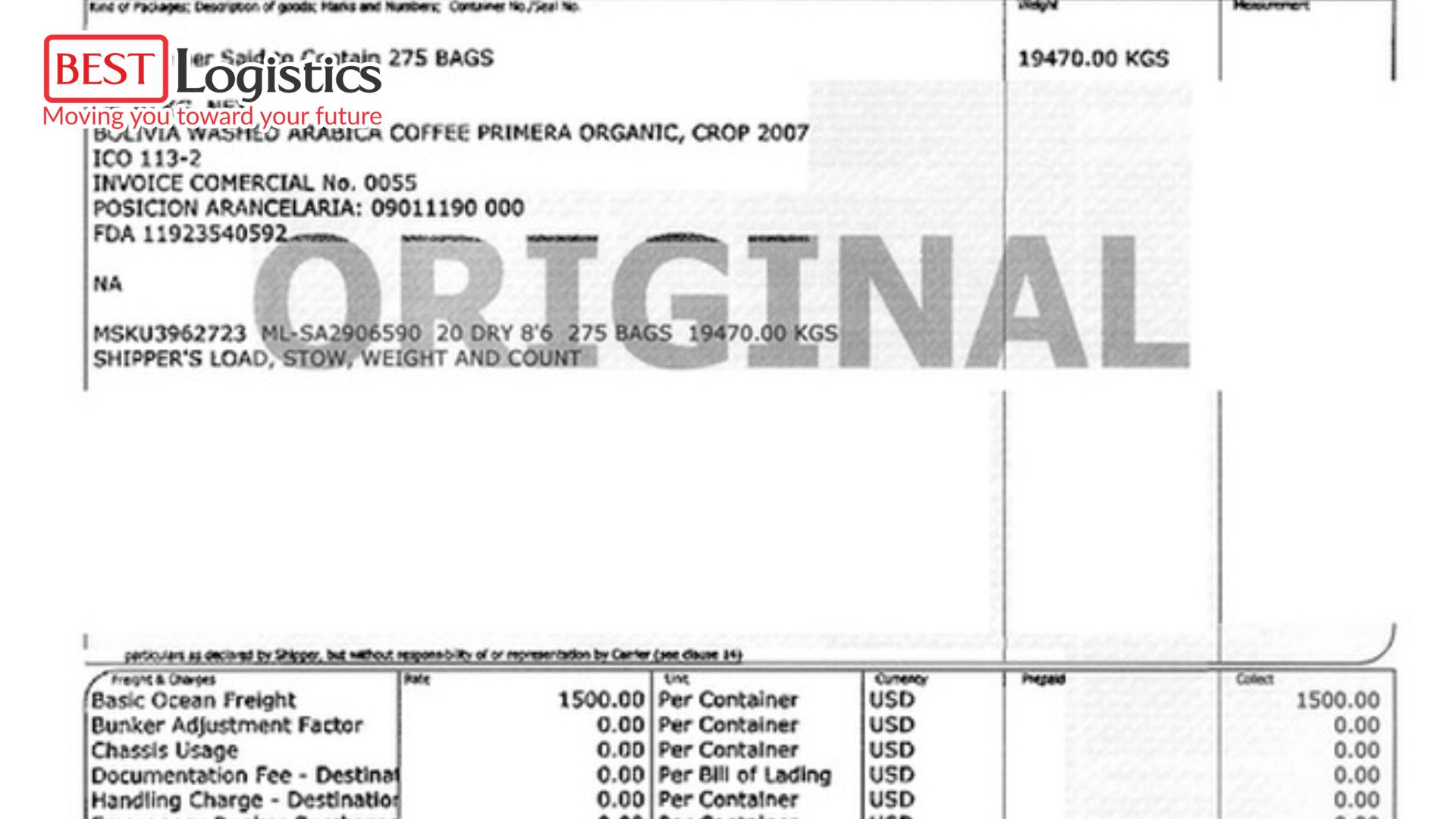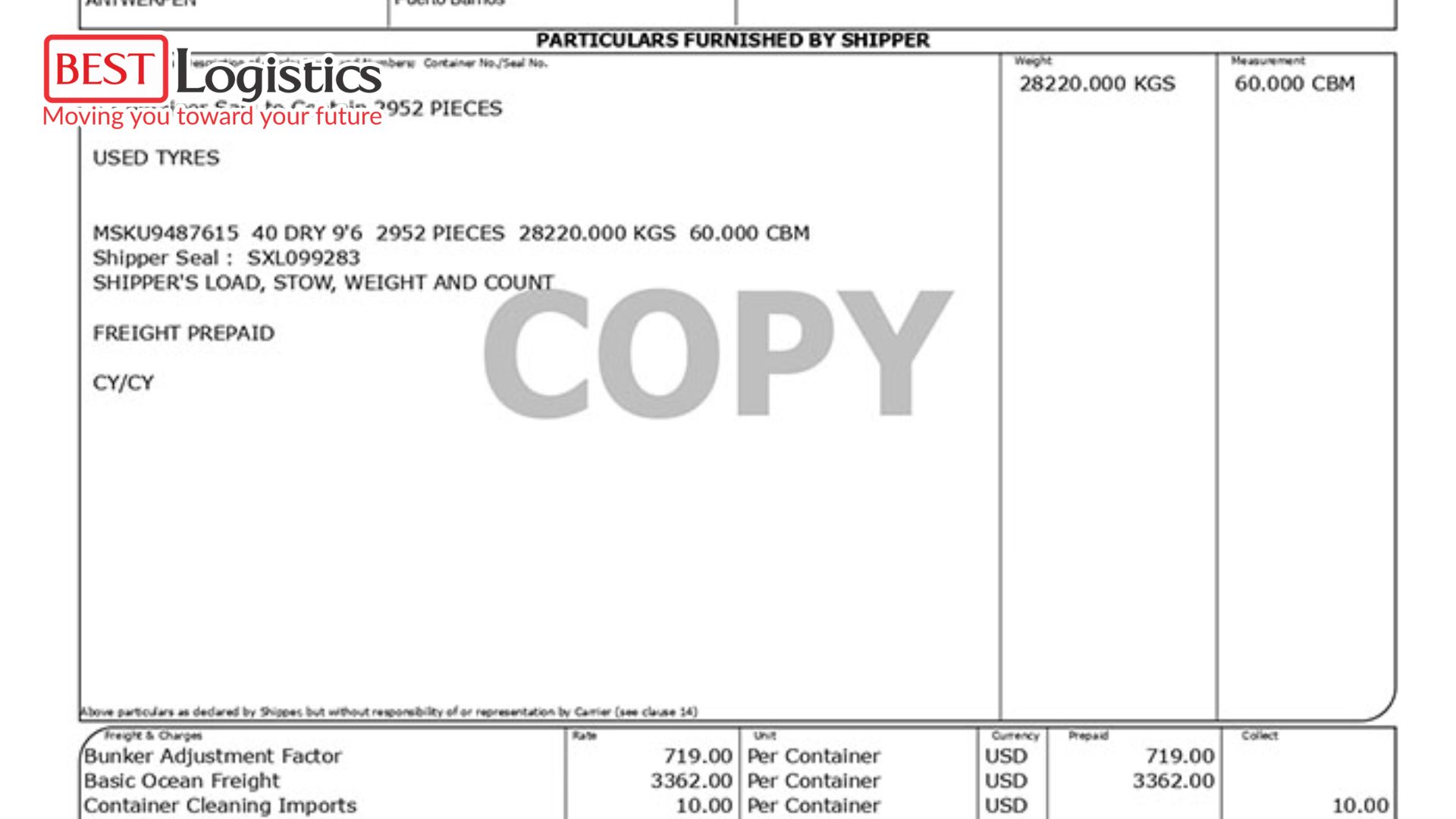5 Things You Need to Know About the Bill of Lading (B/L)
The Bill of Lading (B/L) is one of the most important documents in the transportation and logistics industry. It is not only a receipt confirming the shipment of goods but also holds significant legal and commercial value. If you are involved in import-export, logistics, or freight transportation, understanding shipping documents is crucial. Here are five key things you need to know about the Bill of Lading.
1. The Bill of Lading – An Essential Tool in Freight Transportation
The Bill of Lading plays a crucial role in the global logistics system. It ensures transparency, security, and legality in shipping transactions. For each shipment, the Bill of Lading acts as a bridge between the shipper, consignee, and carrier, helping to control the shipping process and prevent loss or disputes.
Additionally, the B/L is used by import-export companies for customs clearance, payment processing, and claims in case of disputes. Understanding its key details, such as shipper and consignee information, type of goods, weight, delivery terms, and bill of lading number, is essential.

2. Costs and Factors Affecting the Value of a Bill of Lading
The cost of a Bill of Lading (B/L) depends on several factors, including the mode of transport, cargo volume, type of B/L used, and additional services. Businesses must understand these costs to optimize logistics expenses and maintain operational efficiency.
Key factors affecting B/L costs include:
- Type of B/L: An Original B/L is more expensive than an Electronic B/L (E-B/L) due to additional paperwork requirements.
- Freight payment terms: Choosing between Prepaid (paid in advance) and Collect (paid upon delivery) affects overall shipping costs.
- Mode of transport: Sea freight B/L costs are typically lower than air waybills (AWB) since air freight rates are higher.
Additional charges may apply for issuing, amending, or canceling a Bill of Lading based on the shipper’s requests or changes in transportation arrangements.
3. How the Bill of Lading Is Used in Different Distribution Channels
The B/L applies to various modes of transport, including sea, land, rail, and air, each with distinct characteristics:
- Sea freight: Commonly used in international trade, with negotiable and non-negotiable B/Ls. This is the most important type in maritime commerce.
- Air freight (Air Waybill – AWB): Does not confer ownership of goods but serves as a document for monitoring air cargo shipments.
- Domestic transportation: Used in road or rail transport to coordinate shipments within a country, ensuring goods reach the correct destination.
In international trade, the B/L can also serve as a document for banking transactions (such as Letter of Credit payments), helping shippers secure their rights in dealings with foreign partners.
4. How to Optimize the Bill of Lading and Minimize Risks in Transactions
Effectively managing the B/L helps businesses reduce risks and ensure timely cargo delivery. Key optimization strategies include:
- Carefully verifying B/L details: Any errors in the B/L can delay cargo receipt or customs clearance. It’s crucial to check shipper/consignee details, cargo descriptions, quantities, and delivery terms.
- Choosing the right type of B/L: If transferability is needed, a Negotiable B/L is preferable over a Non-Negotiable B/L.
- Using Electronic Bills of Lading (E-B/L): Reduces document processing time, minimizes loss, and enhances management efficiency. E-B/Ls are increasingly replacing paper-based B/Ls in international trade due to their convenience and higher security.
Additionally, working with reputable freight forwarders experienced in handling B/L procedures can help minimize risks in the shipping process.

5. The Role of Stakeholders in the Bill of Lading Process
Each party involved in theB/L process has a critical role:
- Shipper: Responsible for providing accurate details for the B/L and ensuring goods are shipped under agreed conditions.
- Consignee: Must monitor the B/L status to receive goods on time and complete necessary customs procedures.
- Carrier: Ensures cargo is transported as agreed, adheres to shipping regulations, and is accountable for any losses or damages.
- Freight forwarder: Assists in managing, advising, and handling B/L procedures, facilitating smooth coordination between shippers and carriers.
Effective collaboration among all stakeholders ensures smooth freight operations, minimizing issues such as delays, losses, or cargo damage.
Conclusion
The Bill of Lading (B/L) is a vital document that helps businesses efficiently manage and streamline their shipping processes. Understanding its costs, types, applications, and optimization methods allows companies to minimize risks, save costs, and enhance their competitiveness in the logistics industry.
Read more:
5 Điều Cơ Bản Cần Biết Về Vận Đơn (Bill of Lading – B/L)
5 Steps to Make Delicious Green Rice Cake with Mung Bean at Home
Dịch Vụ Vận Chuyển Bàn Ghế Nhựa Từ Hà Nội Vào Huế
Gửi gia vị nấu phở từ Hà Nội đi Washington


